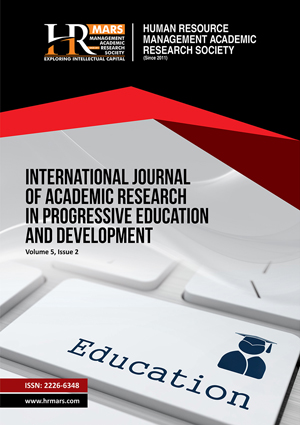
ISSN: 2226-6348
Open access
This paper analyses science students’ acceptance of subjects related to fashion and clothing. This study aims to analyse acceptance levels of students learning fashion-related subjects when enrolled in the Diploma in Textile and Clothing Technology, which is under the Faculty of Applied Sciences. A questionnaire was given to a group of students (n=59) who enrolled in fashion-related subjects consisting of close-ended and open-ended questions. This allows for a quantitative assessment of acceptance levels while also capturing qualitative insights into students’ attitudes, motivations, and concerns regarding their studies in fashion design and pattern making. Findings reveal a multifaceted perspective on the intersection of fashion education and scientific principles, highlighting a strong appreciation for creative aspects of fashion design alongside a recognised need for rigorous technical and theoretical knowledge. Students emphasize the importance of practical skills, such as drawing and hands-on experiences, while advocating for a curriculum that integrates industry relevance and interdisciplinary approaches.
Abdul Hamid, M. S., Islam, R., & Noor Hazilah, A. M. (2014). Malaysian graduates' employability skills enhancement: An application of the importance performance analysis. Journal for Global Business Advancement, 7(3), 181–197.
https://doi.org/10.1504/JGBA.2014.064078
Attin, H., & Jeffery, B. (n.d.). Push factors on students’ enrolment into technical and vocational education and training (TVET) programme at ILTP, JPSM Papar.
Azman, S. M. S., Arsat, M., & Suhairom, N. (2019). Integrating innovation in pattern making teaching and learning for higher education in fashion design. Innovative Teaching and Learning Journal, 3(1), 70–77.
Bicho, M., Pereira, M., Belino, N., & Miguel, R. (2022). Fashion design and fashion technology courses: Practical skills in patterns making, garment manufacturing techniques, technologies, and applications for fashion industry. Human Factors for Apparel and Textile Engineering, 32, 73.
Chida, M., & Brown, G. (2011). Evaluating the gap between industry assessment of job readiness and graduation standards in higher education institutions: The case of fashion studies. International Journal of Fashion Design Technology and Education, 4(2), 71–82.
Choi, T.-M. (2017). Active learning and teaching in fashion (Vol. 10, Issue 1, p. 1). https://www.tandfonline.com/doi/full/10.1080/17543266.2017.1278319
Gault, A. (2017). An investigation into creative design methodologies for textiles and fashion. https://doi.org/10.1088/1757-899X/254/17/172012
Hua, D., Cifter, A. S., & Fan, Z. (2013). Methods for improving undergraduate students’ sketching skills (Vol. 41, Issue 4).
https://journals.sagepub.com/doi/10.7227/IJMEE.41.4.7
Jones, R. (2006). The apparel industry. Wiley-Blackwell.
Kazlacheva, Z., Stoykova, V., Georgieva, K., & Ilieva, J. (2018). Application of innovative technologies in fashion design education (Vol. 459). https://doi.org/10.1088/1757-899X/459/1/012080
LeHew, M. L. A., & Meyer, D. J. C. (2005). Preparing global citizens for leadership in the textile and apparel industry. International Journal of Fashion Design, Technology and Education, 23(4), 290. https://doi.org/10.1177/0887302X0502300409
Lingfeng, Z. (2020). Integration of fashion design education with innovation and entrepreneurship education (Vol. 6, Issue 3).
https://www.medcraveonline.com/JTEFT/JTEFT-06-00234.pdf
Malaysian Investment Development Authority. (n.d.). Lifestyle. MIDA. Retrieved July 26, 2024, from https://www.mida.gov.my/industries/manufacturing/lifestyle/
Oviawe, J. I., Azman, M. N. A., Kiong, T. T., & Abilmazhinova, O. (2021). Attribution styles as correlates of technical drawing task-persistence and technical college students’ performance. Jurnal Cakrawala Pendidikan, 40(2), 544.
https://doi.org/10.21831/cp.v40i2.38079
Raichurkar, P. (2018). Textile industry participation in engineering education is the need of the hour in developing textile industry (Vol. 4, Issue 1).
https://medcraveonline.com/JTEFT/JTEFT-04-00124.pdf
Renninger, K. A., & Hidi, S. (2017). The power of interest for motivation and engagement. Routledge.
Roberts, J., Starr, C., & Peterson, D. K. (2019). Choosing a fashion program: The relevant criteria. Journal of Textile Engineering & Fashion Technology, 5(1).
https://doi.org/10.15406/jteft.2019.05.00175
Roppa, S., & Rani, M. S. (2012). Questionnaire designing for a survey. The Journal of Indian Orthodontic Society, 46(4), 273–277.
Sawitri, S., Prasetyaningtyas, W., Syamwil, R., Achmadi, T. A., Partini, & Ainina, N. Q. (2020). Students’ creativity after joining advanced design class by applying portfolio (Vol. 406, p. 193). https://download.atlantis-press.com/article/125934917.pdf
Stimson, T. J., & Wang, J. (2023). The effects of different personalization services on consumer cognition, emotion, and intention to share information.
Zakaria, N., Vouyouka, A., & Ruznan, W. S. (2022). Sustainable apparel technical and vocational education and training (TVET): Integrating technology for skills training. In Digital Manufacturing Technology for Sustainable Anthropometric Apparel (pp. 3–21). Woodhead Publishing.
Zanu, J. A., Appiah, N. A., & Amegbanu, V. A. (2024). Strengthening industry-academia collaboration for improved fashion education. Asian Journal of Advanced Research and Reports, 18(6), 84–94.
Sulaiman, M. S., Norazli, N. I. A., Suhaimi, S. A., Ruznan, W. S., & Nor, M. A. M. (2025). Fashion Meets Science: Analysing Students’ Views on Fashion Design and Pattern Making. International Journal of Academic Research in Progressive Education and Development, 14(1), 1338–1346.
Copyright: © 2025 The Author(s)
Published by HRMARS (www.hrmars.com)
This article is published under the Creative Commons Attribution (CC BY 4.0) license. Anyone may reproduce, distribute, translate and create derivative works of this article (for both commercial and non-commercial purposes), subject to full attribution to the original publication and authors. The full terms of this license may be seen at: http://creativecommons.org/licences/by/4.0/legalcode